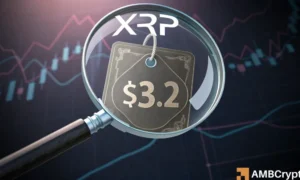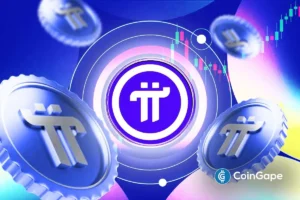Ant Group’s Jovay: Pioneering the Future of Digital Finance on Ethereum
Ant Group, renowned for its Alipay payment network boasting 1.4 billion users, is embarking on a revolutionary journey in digital finance by launching Jovay, a Layer-2 (L2) blockchain. Announced on October 14, this innovative platform is designed to facilitate the on-chain movement of real-world assets (RWAs) at an institutional scale, signaling a transformative shift not only in financial transactions but also in the adoption of Ethereum as a foundational layer for global finance.
What is Jovay?
Jovay is presented as a “compliance-first, AI-assisted scaling network” by Ant Digital, the blockchain arm of Ant Group. The platform aims to integrate real-world data and value flows into the decentralized finance (DeFi) ecosystem. One of its key features is the utilization of dual provers—a combination of zero-knowledge and optimistic technologies—to ensure both scalability and verifiability. A notable aspect of Jovay is its launch without a native token; this strategic decision reflects Ant Group’s intent to focus on institutional and enterprise adoption rather than on retail speculation, laying the groundwork for a robust financial infrastructure.
The Impact of Ant Group’s Reach
With Alipay processing trillions of dollars in payments yearly, even a small shift of its activity to Jovay could profoundly impact the Ethereum network, establishing it as a crucial infrastructure in global finance. According to Jovay’s technical documentation, the network has achieved transaction speeds of 15,700 to 22,000 transactions per second (TPS) in testnet trials, with ambitions of reaching 100,000 TPS. This would not only surpass current performance in the Ethereum L2 ecosystem but also set new benchmarks for efficiency and scalability in digital finance.
The Rise of Real-World Assets
Real-world assets are gaining momentum within Ethereum’s ecosystem, with tokenized treasuries, invoices, and funds exceeding $12 billion in value—a staggering 300% increase since early 2024. However, much of this liquidity is still tied to specialized protocols that lack regulatory clarity. Jovay aims to tackle this challenge through a five-stage pipeline—asset registration, structuring, tokenization, issuance, and trading—that embeds verification checkpoints and off-chain data attestations. This model not only enhances compliance but also aligns more closely with traditional financial processes, offering larger institutions a familiar and secure environment for digital asset operations.
Strategic Shifts in Blockchain Adoption
Ant Group’s decision to build Jovay on Ethereum reflects a broader evolution in how financial institutions perceive blockchain technology. Traditionally, major corporations favored permissioned blockchains to mitigate exposure to volatility. However, with increasing government interest in public blockchains, the landscape is shifting. Ant’s choice to adopt Ethereum legitimizes the use of public infrastructure for institutional finance. This move also emphasizes the importance of interoperability; every asset created on Jovay could potentially tap into Ethereum’s expansive DeFi ecosystem, valued at around $100 billion.
A Cost-Effective Model for Financial Transactions
The economic efficiencies presented by Ethereum are compelling. Reports indicate that Coinbase-backed Base has generated less than $5 million in fees for Ethereum’s layer-1 validators, indicating a significant cost advantage—98% less than what would be incurred by a standalone chain. For Ant Group, this translates to reduced settlement costs, which is crucial for serving its billion-user clientele efficiently. Lower transaction costs may promote broader adoption of decentralized finance, strengthening Ethereum’s role in the global economy.
Ethereum: The New Trustworthy Settlement Layer
Jovay’s introduction underscores Ethereum’s gradual yet firm establishment as a trusted settlement layer for institutions. Once regarded as experimental territory, Ethereum is now becoming a safe haven for banks and fintech companies wary of relinquishing control. Should Jovay gain significant traction, the ramifications could extend beyond RWAs to encompass various asset classes like energy credits and municipal bonds, creating fresh opportunities for liquidity and block space demands on Ethereum. As mentioned by Abbas Khan from the Ethereum Foundation, this shift indicates that the next wave of users may not arise from speculative activities. Instead, they could arrive quietly as their assets and financial instruments transition onto compliant blockchain rails running on Ethereum.
Conclusion
Ant Group’s launch of Jovay represents a significant leap toward embedding real-world value in the decentralized finance landscape. By leveraging the strengths of Ethereum, Ant is paving the way for institutional-grade applications in the blockchain ecosystem, potentially redefining the future of finance. As this new infrastructure develops, it promises to facilitate seamless transactions across global finance, bridging traditional systems with innovative blockchain technology, and ensuring compliance while maximizing efficiency. Jovay could very well be the catalyst for the next generation of financial interactions in the digital age.

















